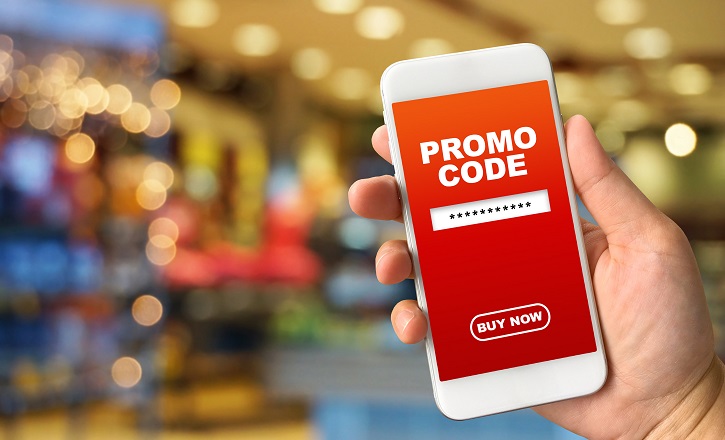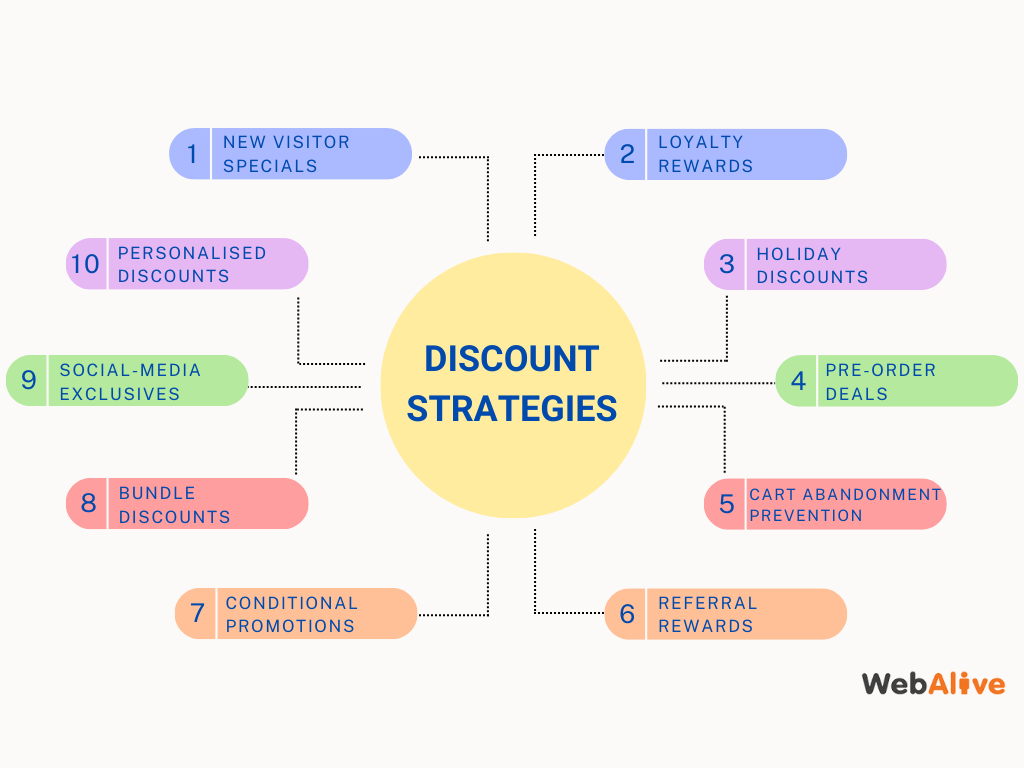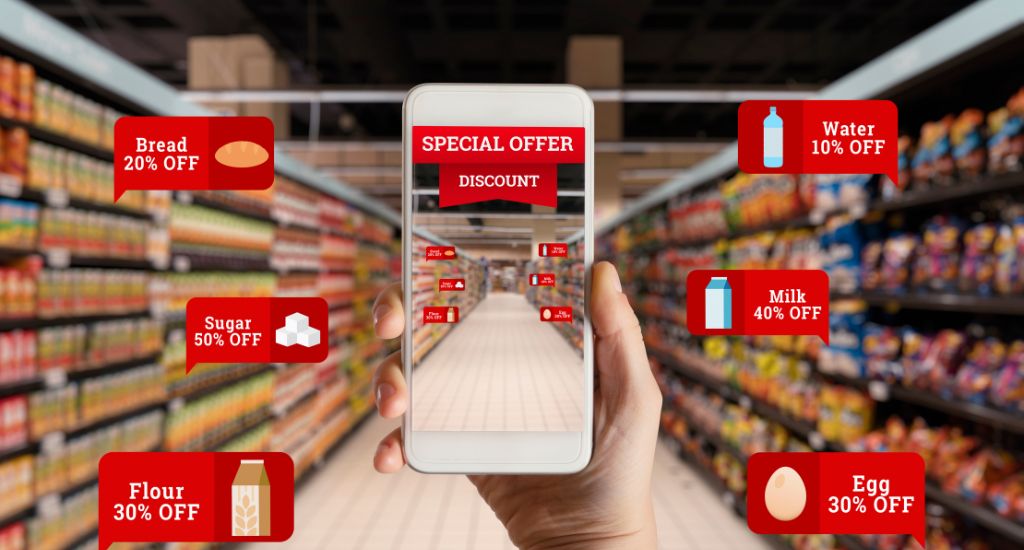
10 Ecommerce Discount Strategies to Increase Conversion
When done correctly, discount pricing can significantly boost customer conversion and retention rates. However, poorly executed discount strategies can sabotage your business in the long run.
It is not only about reducing prices at every opportunity you get. You need to be tactical with your approaches with discount offers for maximum gains.
This brings us to the question: What defines an effective discount strategy? To answer that, we need to understand how customer psychology works and how we can appeal to them through discounts without hurting our revenue.
This article will walk you through some effective discount strategies proven to increase conversion while keeping the revenue flow unharmed.
How Discounts Affect Customer Psychology

Before delving into the technical stuff, let’s look at how customers usually respond to discounts.
When you give incremental discounts, your sales will likely experience an equivalent thrust. However, when you start providing deep discounts, a plateauing effect kicks in. Beyond a certain point, discounts don’t do much for your sales.
Customers find massive discounts suspicious and start questioning the quality of the product and that of the associated vendors. Thus, motivation to buy these discounted products decreases, resulting in the plateauing effect.
Discounts are most effective at the end of the purchase funnel. What this means is that if you bombard your customers with exclusive deals and coupons from the moment they start interacting with your business, they would not be intrigued to make purchases based on these offers. In addition, you come off as an entity desperate to move unsold inventory.
It is important to remember that customers first look for emotional comfort when making a purchasing decision. Discounts help them rationalise their actions.
Colossal discounts can often instigate pricing trust issues, causing buyer’s remorse. As a result, the customer retention rate might decrease.
10 Discount strategies and the context of using them

Generally, businesses offer discounts when they need to acquire new customers, increase sales, mobilise unsold inventory, increase customer retention, and promote new products. However, dynamic contextual factors can have broader implications for your business.
You can use the following discount strategies to maintain a high conversion rate through discounts, keeping the revenue stream within tolerable margins.
1. Give special offers to new visitors
Early on, we suggested against offering discounts to potential customers from the get-go. But in some cases, tactical placement of discount offers might play to your advantage.
Not all visitors are keen on making purchases from the first visit, as it is a big commitment. So you have to nudge them in the right direction. Offering up a small discount in exchange for their email addresses could do the trick.
On the one hand, the visitors are motivated to provide their contact information in exchange for the discount; on the other, you are opening up potential avenues for marketing. Talk about killing two birds with one stone!
People always like to have reasons behind their actions. Offering value in exchange for information gives them that reason. The offers don’t need to come in the form of price reductions only. You can provide free shipping or even a small gift on the first purchase.
If non-followers learn that they will receive more value just by signing up or subscribing to your newsletter, they will be more likely to do so. This approach is more subtle than blatantly offering discounts without any particular reason.
To execute this tactic effectively, your approach has to be highly targeted. Make sure that such offers only pop up for new visitors. In addition, to make the target segment aware of the offer’s exclusivity, personalise the copy.
2. Reward loyalty

Rewarding loyal customers strengthens your relationship with them and potentially enhances customer lifetime value. For example, you can offer a coupon or a gift with the next purchase upon crossing a certain amount. This approach motivates customers to expand their budget to reach that threshold. In addition, they are intrigued to cash in on the discount through the following purchases.
Catering to loyal customers gives you an advantage as you know their purchase history. You can use the available information to customise offers for each customer. Doing so increases the appeal of the offers, as 76% of shoppers prefer personalised rewards to random ones. This approach enhances the probability of securing the sales associated with the discounts.
You can also set up an incremental discount strategy. The more customers spend, the more points they accumulate to cash in for higher rewards. Thus, the volume of purchases equalises the margin you sacrifice on discounts.
3. Offer discounts during holiday seasons
During holiday seasons, customer traffic and conversions surge. Strategic measures can highlight your brand as a more viable alternative to your competitors. Discounts and coupons can help you capitalise on the opportunity.
For customer convenience, you can create a product page containing all the exclusive deals. Once customers land on the page, they can skim through the available options and instantaneously make their decisions. If they have to scour your website to find which products have been discounted, their chances of making purchases decrease due to the inconvenience.
You can also instigate volume purchases through bulk discounts during these seasons, especially during holidays that emphasise gift-giving, such as Christmas, Easter, and Halloween.
4. Provide pre-order discounts
When you bring a new product to the market, you probably want to maximise its sales. If you wait for that to happen organically, the dynamic market forces might return underwhelming outcomes. However, you can bypass such uncertainties by offering a competitive discount on pre-orders of these products.
Your customers get more value for their money, and you secure sales even before the product hits the market. To get customers on board with your pre-order offers, you must have a trusted image among the target segment. Poor after-sales service and late deliveries can raise red flags, discouraging customers from purchasing.
5. Offer discounts to prevent cart abandonment

57% of Australian shoppers abandon their carts sometimes or all the time. High shipping costs and hidden charges are the leading causes of such actions. On the other hand, 53% of Australian consumers revert from abandoning their carts if they get discounts and promotional offers.
If a customer abandons the cart, you lose all the revenue associated with that purchase. To prevent that from happening, offer discounts when your customers are about to leave. Even with a discount, you can recover a significant portion of the revenue, which otherwise would have been lost completely.
It is important to note that if you use this tactic frequently, customers will tend to abandon carts to take advantage of the discounts. This could permanently damage your revenue stream.
6. Reward referrals
When an existing customer refers your products and services to others, the probability of conversion becomes high. People tend to trust their peers more than typical marketing efforts.
If you incentivise your customers for referrals, they will be motivated to do so. Acquiring new customers through this approach can boost your revenue and reduce average customer acquisition costs.
While referral marketing works well for conversions, it might not be as effective for retaining customers. As you don’t have control over the types of customers you take in, it can be challenging to keep them purchasing from you using the existing marketing tactics.
7. Run conditional promotions
Unlike blanket promotions, conditional promotions give you a certain level of flexibility.
Conditional discounts come in many forms. For example, you can prompt customers to buy a certain amount of a particular product to get a specific percentage off. You can also compel customers to purchase particular products by associating them with exclusive discounts.
Motivating customers to join your loyalty program by offering conditional discounts can also be effective. If your prospects see that they can get a good deal on their purchases by providing some information, the chances of following through increase.
8. Offer bundle discount

A bundle discount is a promotional offer in which customers receive a reduced price or special deal if they purchase a combination of products or services. Online retailers commonly use this strategy to encourage customers to buy multiple items at once, increasing their average order value and potentially boosting sales.
First, analyse your customer data to identify purchasing patterns, popular products, and items frequently bought together so that you can tailor your bundle offerings to meet their needs. Then, choose products that complement each other or are frequently used together.
For example, if you sell cameras, a bundle could include a camera body, lens, camera bag, and memory card. Also, ensure that the bundle offers significant savings compared to purchasing each item individually.
9. Provide social-media exclusive discount
Select social media platforms where your target audience is most active. Whether it’s Facebook, Instagram, Twitter, LinkedIn, or others, ensure your chosen platform aligns with your audience demographics and preferences.
Emphasise the discount’s exclusivity to incentivize social media followers to take action. Communicate that the offer is only available to those who follow or engage with your brand on social media platforms.
Suppose you can conduct an Instagram poll asking followers to vote for their favourite product or service among a selection. Then, offer a discount code exclusively to those participating in the poll and reveal the code once the poll closes.
10. Send personalised discount
You can determine specific events or behaviours that will trigger personalised discounts. These could include a customer’s birthday, the anniversary of their first purchase, reaching a certain spending threshold, or showing interest in a particular product category. You can also divide your customer base into segments based on factors such as purchase history or demographics.
Then, target each segment with personalised discounts relevant to their needs and preferences. For example, you can offer a special birthday discount or a free gift with a purchase to loyal customers who have made multiple purchases in the past year, send a birthday email with a discount code or offer a special promotion to encourage occasional buyers to make a purchase.
Tips for developing an effective discount pricing strategy
When crafting your discount strategy, thoughtful consideration of some factors is key.
- Focus on your business objectives and choose the discount structure that best suits your business objectives and customer preferences.
- Understand your target audience’s preferences, behaviours and price sensitivity.
- Evaluate the impact of discounts on your profit margins.
- Research your competitors’ discounting strategies to gain insights into prevailing market trends and pricing dynamics.
- Determine the timing and duration of your discount promotions strategically, considering factors like seasonality, holidays or customer buying patterns.
- Leverage customer segmentation to tailor discount offers to different customer segments.
- Maintain consistency with your brand image and positioning when implementing discount promotions.
Wrapping Up
Finding the perfect balance for your discount strategies cannot happen overnight. You must go through a trial and error-process to find the right fit for your business. To stay profitable, set specific goals that permit healthy margins. Knowing customer acquisition costs, sales history, and relevant buying trends could help personalise the discount strategies for your target audience.
Discounting can be an effective tool for acquiring new customers, moving inventory rapidly, and engaging existing customers with your brand. Nevertheless, you must be mindful of the pitfalls and use data-driven tactics to keep your revenue stream unharmed.
Not all discount strategies will be successful, and that’s okay. But your strategies can bring significant returns once you get the hang of it. Furthermore, you should not be restricted by the strategies mentioned here. Different customer segments have diverse requirements and characteristics, and making contextual modifications can be very rewarding.
You read a lot. We like that
Want to take your online business to the next level? Get the tips and insights that matter.

